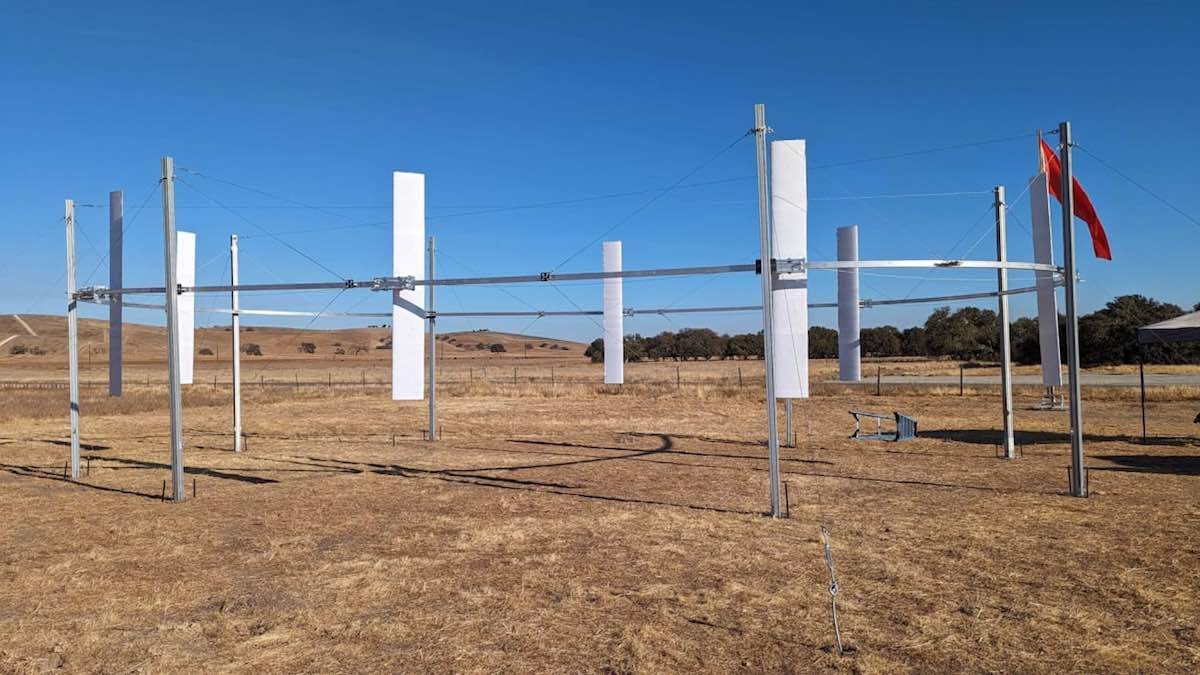#52 Airloom Energy
Wind power on a clothesline
Read time: 5 minutes
Hi, I’m Javi Gascón.
This is Climate Tech Distillery, a newsletter where I talk about one specific climate tech company every week.
Subscribe for free to receive my weekly articles in your inbox.
Today we’ll distill a company creating the next era of wind power with low-cost, efficient, and scalable turbine technology: Airloom Energy 🇺🇸
Want to sponsor Climate Tech Distillery? Here’s all the info.
What Problem Does Airloom Energy Tackle❓
They tackle several specific problems associated with traditional wind energy production:
1. High Costs: Traditional wind turbines are expensive to manufacture, transport, install, and maintain. The cost includes materials, logistics, and construction
2. Large Size and Complexity: Conventional wind turbines are enormous, with some standing taller than the Eiffel Tower. This size increases costs and logistical challenges, including the need for large cranes and significant land requirements.
3. Environmental and Visual Impact: Large turbines have a substantial visual impact, leading to NIMBY (Not In My Backyard) opposition. They also pose risks to wildlife, such as birds and bats.
4. Limited Deployment Sites: The size and height of traditional turbines limit their deployment to specific sites, often requiring strong and consistent wind currents at higher elevations.
5. Levelized Cost of Energy (LCoE): The rate between lifetime cost of the energy asset and lifetime energy it produces. The current LCoE for wind energy is around $0.038/kWh, which, while competitive, can be further reduced to make wind energy more economically viable.
Product / Service 📦
Airloom Energy's created a revolutionary wind energy system that’s very different from conventional horizontal-axis wind turbines. The wind makes those small blades move around the oval.
It’s awesome for several reasons:
Cost-Effectiveness: Designed to be much cheaper. With an LCoE of 1.3 cents per kilowatt-hour, it’s one-third of what conventional turbines cost.
Environmental and Visual Benefits: Minimizes environmental impact, requiring less infrastructure, fewer roads, and less electrical cabling. It also has a smaller visual footprint, reducing visual intrusion and potential NIMBY opposition.
Efficiency and Scalability: The system uses a unique oval track with wing blades that harvest wind energy more efficiently, allowing for higher energy production per square kilometer. It is scalable and can be optimized for various wind speeds and sites, including low-wind and restricted areas.
Simplified Installation and Maintenance: Uses mass-manufacturable components, standard shipping networks, and simpler installation and maintenance procedures, making it easier and cheaper to deploy and maintain.
Basically a more efficient, cost-effective, and environmentally friendly solution for wind energy production. 🎉
Market 🌐
The overall wind energy market was valued at around $100 billion in 2024 and is set to grow at a CAGR of 10.2% from 2024 to 2034. Airloom is set to grow much faster given all their advantages over traditional wind turbines.
Other Key Players
Several companies like Bergey WindPower, XZERES Wind and major wind turbine manufacturers are creating small turbines and offering a few different design but still quite similar to traditional turbines.
Airloom is the only one radically changing the design and demonstrating it’s superior in many aspects.
Founding Story 🦄
Airloom Energy was founded by Robert Lumley, whose interest in wind power was sparked by his enthusiasm for kiteboarding. The idea for Airloom began to take shape in 2013, when his passion for kiteboarding led him to study wind power more deeply.
The company was founded in 2014 in Wyoming and the concept was solidified in 2018, after Lumley had an epiphany while drinking a beer at a bar in Berlin, Germany. He scribbled down a novel idea for a wind energy system on the back cover of a book titled "Airborne Wind Energy" that he had obtained at a conference. This early drawing would eventually become the centerpiece of his business.
The company has raised $14.75 from funds like Lowercarbon Capital and Breakthrough Energy Ventures and in 2025 they will build their pilot project in Wyoming to validate power production and CAPEX.
Top Impact Stats 📈
The capital costs for an Airloom wind farm are projected to be 4X lower than traditional wind farms.
A 2.5 MW Airloom unit is estimated to cost less than 10% of a comparable traditional turbine, at under $225,000.
An entire 2.5 MW Airloom layout can be transported on a single truck, compared to the 40 truckloads of concrete required for a traditional turbine base.
Whenever you’re ready, there are 2 ways I can help you:
Scale and optimize your climate business: I build low-code automation systems for climate companies so they can free up time to scale their revenues and their climate impact.
Give visibility to your climate company: Get your company in front of an audience of thousands of climate players and enthusiasts by sponsoring newsletter issues and LinkedIn posts.
Thanks for reading today’s issue! If you liked it feel free to hit the ❤️ button and share it with someone who might like it too. See you next Saturday :)









